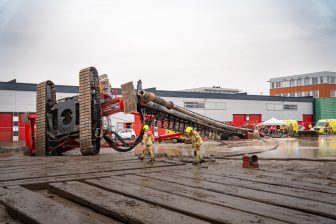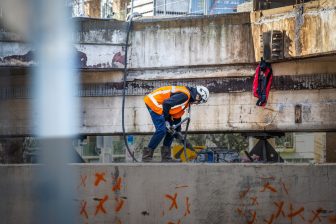ICE: Maglev rail technology fails to roll
London, United Kingdom – The Institution of Civil Engineers (ICE) has 2006-11-30 released “Which way?”, a report recommending that conventional high speed rail technology is used, rather than magnetic levitation (Maglev), to build a UK high-speed rail link. As this would be a prestige project, potentially costing £30 billion, it is important to be assured that the system could deliver major benefits for the economy and the environment.
As Maglev is not yet a mature technology, ICE contends that it cannot prove itself yet over the long tem. The only commercial Maglev system in the world runs from Shanghi airport to Hangzhou. Operational since 2004, it has not been possible to assess its long term reliability. Given the potential cost over runs associated with building brand new technology, choosing Maglev over conventional systems would be an unnecessary risk, for little gain.
Graeme Monteith, Chairman of ICE’s High-Speed Rail Panel commented:
“The UK needs to consider a new north-south high-speed rail line to counteract the dominance of aviation between Scotland and London. However, it would be inappropriate and irresponsible to risk what could be vast sums of public money, by using Maglev”.
If a high-speed railway is deemed necessary, ICE recommends using the same conventional high-speed track, as used on the Channel Tunnel Rail Link – recently renamed High Speed 1. This will allow passengers to travel from Paris to London in 2 hours 15 minutes.
In the UK the lack of competition for aviation pushes people into flying. Research conducted by the Department for Transport indicates that journey time is the decisive factor for travellers. If a journey takes longer than three hours by train, then passengers will opt to fly. This is the current situation with aviation holding 93% of the business market between Scotland and London.
Building a high speed rail link would help to reverse this trend, as journeys from London to Scotland could fall below the magic three hour mark. This would be good for business, and as high speed rail is more energy efficient than flying, better for the environment.
The report also identifies the potential barriers to be addressed if the UK builds the link. The biggest obstacles to be overcome are the UK’s natural geographical barriers such as the Downs, Chilterns, Pennines and Cheviots. However there is also the concern there are likely to be lengthy planning disputes over the proposed route.
Background information
1. ICE is one of the pre-eminent engineering institutions in the world. Established as a learned society in 1818, it has over 80,000 members and provides a voice for civil engineering, continuing professional development and promoting best practice throughout the industry.
2. The “Which way?” report is based on a research study carried out by the Department of Civil Engineering at the University of Birmingham. It examines the feasibility of such a system from a technical standpoint: which transport technology – steel wheel/steel rail or magnetic levitation – is most appropriate to the UK’s needs? Should a very high-speed system link city centres or out-of-town transport ‘parkways’?
U las zojuist één van de gratis premium artikelen
Onbeperkt lezen? Profiteer nu van de introductieaanbieding voor € 10,- per maand.
Bent u al abonnee?



